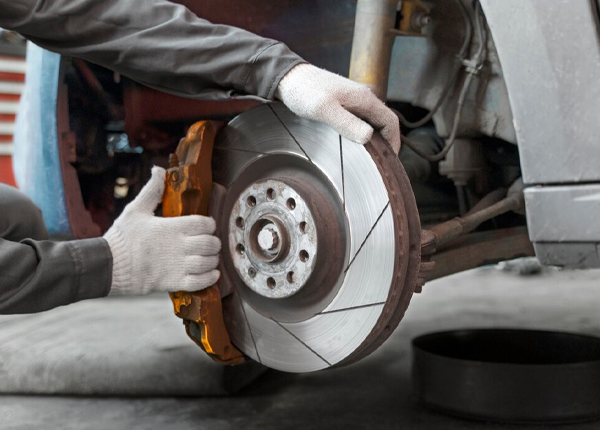Stopped Machine Meaning: Understanding Causes and Solutions
What a seized engine means is a situation where the internal components of the engine are stuck and the engine can no longer run.
The engine of your vehicle is one of the most important components that you should always take care of. You must perform all regular maintenance to avoid sudden breakdowns that can cost thousands of dollars to repair.
Engine stalling is one of the common problems you may encounter, especially in the later stages of your vehicle’s life. When this happens, it can require major repairs, and this is why you need to be well prepared and understand the root causes and possible solutions to this problem.
This is a comprehensive guide to help you understand the ‘meaning of a machine stop’. Plus, it gives you information on root causes and solutions recommended by automotive experts to help you troubleshoot and understand your options.
Meaning of “engine blocked”.
Have you ever sent your vehicle to a mechanic for internal engine problems, and your mechanic said his engine was seized? Of course, you want to avoid hearing about this very complicated situation, as it indicates that something serious is going on inside the engine.
Usually “engine stall” means that the internal components of your machine seize up and stop working completely. In this case, your engine will not run at all, and in most cases, you will have to replace the engine with a used, rebuilt, or new one.
Unfortunately, dealing with a dead engine is not a pleasant situation. This is one of those situations where you need to take a step back and understand your options before spending money on something that could be better.
Causes of engine stall
As a driver, one of the first things to consider is understanding the root causes of traffic jams. Once you know the root cause, you will do everything you can to prevent it and prevent your engine from stalling.
Fortunately, automotive experts can compile a list of the most common causes of stucks. Let’s take a look at this list:
1. Continuous overheating
The first and most common cause of engine stall problems is related to overheating issues. It is known that any engine must operate within a minimum and maximum temperature that must not be exceeded. If the temperature exceeds the maximum threshold, it causes many problems, including engine shutdown.
It is important to note that engine overheating occurs due to many factors that affect the lubrication and cooling systems. Therefore, it is very difficult to determine what exactly is causing the engine to overheat if you consult your mechanic.
Your mechanic should have the right tools to help you narrow down your list and identify any potential problems you have to help you fix the problem before overheating takes hold and damages your engine.
2. Lack of lubrication
Any vehicle equipped with a combustion system requires continuous lubrication. This happens when you add your motor oil. You’ve probably heard often from mechanics that you need an oil change, which means your oil is nearing the end of its life and you need to replace it to get the best lubrication for your engine.
Your machine has many internal moving parts that interact with each other continuously. If you don’t have enough oil, these internal components can generate a lot of heat, which can cause the engine to stall or stall.
3. Mechanical damage
In addition to issues related to overheating, there may be an internal mechanical failure of the machine that causes a stall situation. Therefore, the only way to determine if there is a mechanical fault is to consult your mechanic.
Mechanics rely on software or tools to help them scan the internal computer and understand the cause of these problems. They may also have good experience helping you perform a quick check and determine what is causing the mechanical failure on the machine.
If you’re lucky, this mechanical failure may resolve itself, leaving you unable to fix the problem and prevent your engine from stalling. However, in most scenarios, mechanical damage to your machine causes the machine to stall or internal components to seize.
4. Contaminated oil
Finally, since your engine is very dependent on lubrication, you must maintain not only the quantity of oil but also the quality. Over time, this oil will begin to accumulate debris and contaminants, and as it ages, it becomes inefficient at lubricating the engine.
Contaminated oil can lead to many problems, including engine stalling and stalling. Therefore, you should always appreciate the importance of changing your engine oil frequently and check for signs that could indicate engine oil contamination.
Engine stall signs
Now that you have a good idea about the typical causes of stalling and stalling, the next step is to determine what signs to look for to understand if you’re dealing with a stall soon.
Identifying these signs helps you see your mechanic right away and avoid major complications that could result in the need to install a new engine. Let’s take a look at some of these stall engine signs:
1. Loud grinding noises
The first and most common sign that you might be dealing with an engine stall is hearing loud grinding noises from the engine location. These grinding noises can start very quietly when the engine stall is not taking place completely, so you need to catch them as quickly as possible to avoid further complications.
2. Smoke out of the hood
Another potential symptom of your engine stalling is when you see smoke coming from the hood. This can be a very scary situation, especially for inexperienced drivers. Therefore, you should never ignore the problem and shoot your vehicle whenever possible to avoid further complications.
3. Warning lights on
Once you get to the stage where your engine completely stalls, you’ll start to notice warning lights on your dash complaining of internal issues. Unfortunately, many inexperienced drivers may need to pay more attention to the value of concentrating on these boarding lanes and watching out for them when they are activated.
For example, you’ll see a check engine light illuminating the dash. This check engine light could come on due to a problem that is not related to the engine itself, but could also be related to the engine. That’s why you should monitor your dash and look for other symptoms that can help you narrow down the list of potential culprits and determine if it’s a stall engine.
4. Difficulty starting the engine
As the engine works harder and the stall becomes more severe, you will notice that the engine will not start. Sometimes you can turn the ignition key on but find that the engine is not starting. Many might think that it is just a problem with the battery or the alternator. However, it could be a sign of an engine stall.
5. Total loss of power
Finally, if your engine loses power completely, it could indicate that you have a problem with the engine itself, which could be related to an engine stall. The only way to confirm is to try to start the vehicle again, but if you find that the engine has gone, it could be a clear problem that is related to the stall.
Engine stall solutions
After you understand the meaning of “engine stuck”, you should look for ways to solve a problem. There are a few potential options you should consider before spending any money on this engine. Here are some examples:
- Inspect engine and replace faulty internal components
- Perform an engine flush to get rid of the oil system and replace with fresh oil
- Perform an oil change and replace the oil filter
- Allow your engine to cool down
- Check the cooling system
- In some severe scenarios, you may be dealing with a situation where you have to replace the entire motor.
Meaning of “blocked motor”: Conclusions
This article helped you understand the meaning of the engine stall. A common situation could occur with vehicles indicating that internal components are becoming damaged and seizing within your engine. The article also helped you understand the causes of these problems, how to solve them, and how to detect engine stalls as soon as possible.



